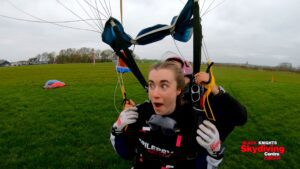What happens during an absence seizure?
Typical absences
If you are having a typical absence seizure, you will suddenly stop what you are doing for a few seconds, but will not fall. You might appear to be daydreaming or ‘switching off’. People around you might not notice your absence seizure.
Your eyelids might flutter and you might have slight jerking movements of your body or limbs. In longer absences, you might have some short, repeated actions. You won’t know what is happening around you, and can’t be brought out of it.
Some people have hundreds of absences a day. They often have them in clusters, one after another, and they are often worse when they are waking up or drifting off to sleep. Typical absence seizures almost always start in childhood or early adulthood.
Atypical absences
These absences are similar to typical absences, but they are not the same. They last longer, and they start and end more slowly. You might be able to move around, but your muscles might go limp or ‘floppy’, making you appear clumsy. You may be able to respond to someone during an atypical absence seizure.
People who have atypical absences usually have learning disabilities or other conditions that affect the brain. Atypical absences can happen at any age.
How long do absence seizures last?
One typical absence seizure usually lasts less than 10 seconds. But some people have clusters of absences one after another.
Atypical absence seizures last longer, up to 30 seconds.
What happens after an absence seizure?
After an absence seizure, you’re normally able to go straight back to what you were doing beforehand. If you’ve had a cluster of several absence seizures you might feel confused.
How can someone help me during an absence seizure?
Our short online first aid course shows you what absence seizures can look like, and how to help when someone has one. Visit absence seizure first aid.
Got more questions?
Our expert advisors can help you with any questions you might have about absence seizures or anything else related to living with epilepsy.
This information is currently being reviewed and will be updated soon.




